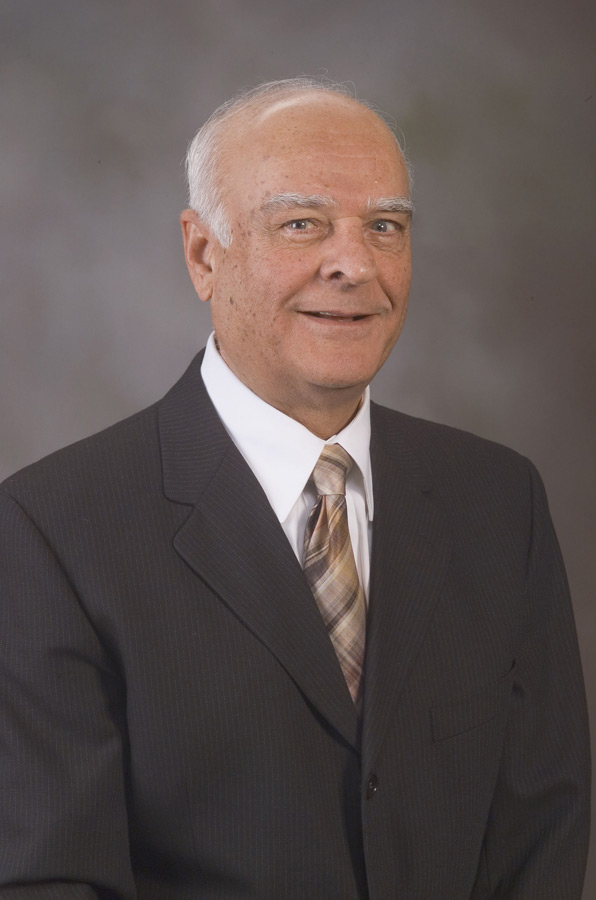Ali Nayfeh earns Virginia's Lifetime Achievement in Science Award

Ali Nayfeh earned three academic degrees in four and a half years at Stanford University. He kept this pace up throughout his professional career, leading to today's announcement that the Virginia Tech University Distinguished Professor has garnered Virginia's 2005 Lifetime Achievement in Science Award, presented by the Science Museum of Virginia.
Nayfeh, a member of Virginia Tech's Department of Engineering Science and Mechanics (ESM), is considered to be "perhaps the most prolific researcher with significant and lasting contributions to the literature in nonlinear vibrations in the last 30 to 35 years," writes one of his colleagues, Anil K. Bajaj of Purdue University. He has written 10 books, some of which are translated into Russian and Chinese, more than 400 articles in referred journals, and more than 530 presentations at national and international conferences. He has started to relate his analytical findings to practical applications, especially in the areas of ship dynamics and aerospace structures.
For example, many of Nayfeh's experiments were aimed at understanding nonlinear phenomena and how they can be exploited to expand the design space and/or develop efficient control methodologies. In a set of experiments, he simulated the response of ships and boats in high seas. His goal was to improve the understanding of the complex factors involved in the stability of these vessels, leading to better designs so that they are more seaworthy and less prone to capsizing.
Among his contributing research achievements, Nayfeh has developed: a new methodology for controlling ship motions that is being considered for implementation on ships; a novel wave envelope method to analyze acoustic waves in aircraft engine-duct systems; and a system for controlling the pendulation of military and commercial cranes that is being considered for implementation on container cranes and ship-mounted cranes for naval and commercial applications. His method of multiple scales is the method of choice for treating nonlinear vibration problems.
Nayfeh's interest in ship dynamics was stimulated during his graduate student days in 1963, when a friend who was doing research in this area asked Nayfeh to help him with a mathematical problem. Nayfeh recognized that the principles of mathematics and physics could be applied to that problem. He became more intrigued "and here I am," he said. Like many of his colleagues, he works with what are elusive abstractions to the lay person.
A non-engineer, for instance, would be hard put to imagine what subharmonic, ultrasubharmonic, and superharmonic resonances — not to mention frequency entrainment and period multiplying bifurcations — have to do with the capsizing of ships and boats. Nayfeh, however, said that the practicing naval architect must be familiar with all the above phenomena, and understand their effects — even though some of them may not be very significant in ship motion. This way, the ship designer can avoid a design that promotes capsizing, as well as recommend appropriate actions to control or minimize the large motions.
Nayfeh has taught at Virginia Tech for 33 years. A native of Jordan, he took a leave of absence during 1980 to 1984 to establish an engineering college at Yarmouk University, 45 miles north of Amman, the capital of Jordan. He served as engineering dean of the college, and as vice-president for engineering affairs at the university. Nayfeh was awarded the Kuwait Prize in basic sciences (a gold medal and $40,000 in cash) in 1981. He is the recipient of the AIAA -- Pendray Aerospace Literature Award (1995) for seminal contributions to perturbation methods, nonlinear dynamics, acoustics, and boundary-layer transition praiseworthy for their quality, relevance, timeliness, and lasting influence on the aerospace community; the ASME J. P. Den Hartog Award (1996) in recognition of lifetime contributions to the teaching and practice of vibration engineering; and the ASME Lyapunov Award (2004) for lifelong contributions to nonlinear dynamics.
More recently, the American Society of Mechanical Engineers (ASME) recognized Nayfeh for his lifelong contributions to the field of nonlinear dynamics. He is the first recipient of the newly established Lyapunov Award, to be presented in September of 2005. Also, the Office of Naval Research asked Nayfeh to join its High Capacity Alongside Sea Base Sustainment (HiCASS) team led by Lockheed Martin. This team will design ship-to-ship transfer in high seas. Such transfers will support the Navy's concept of sea basing.
Nayfeh has directed over $25 million in engineering research. Nayfeh has produced a significant legacy by graduating 75 doctoral and postdoctoral students who also have made important contributions to research and teaching. He holds three Honorary Doctorates from the Marine Technical University, Saint Petersburg, Russia; the Technical University of Munich, Germany; and the Politechnika Szczecinska, Poland. He is a Fellow of the American Physical Society, the American Institute of Aeronautics and Astronautics, the American Academy of Mechanics, and the ASME. Nayfeh serves as editor-in-chief of the leading international journals that address the state of the art in their fields: Nonlinear Dynamics and Vibration and Control. He is also the editor of Wiley's Book Series on Nonlinear Science.
Founded in 1872 as a land-grant college, Virginia Tech has grown to become among the largest universities in the Commonwealth of Virginia. Today, Virginia Tech's eight colleges are dedicated to putting knowledge to work through teaching, research, and outreach activities and to fulfilling its vision to be among the top research universities in the nation. At its 2,600-acre main campus located in Blacksburg and other campus centers in Northern Virginia, Southwest Virginia, Hampton Roads, Richmond, and Roanoke, Virginia Tech enrolls more than 28,000 full- and part-time undergraduate and graduate students from all 50 states and more than 100 countries in 180 academic degree programs.



